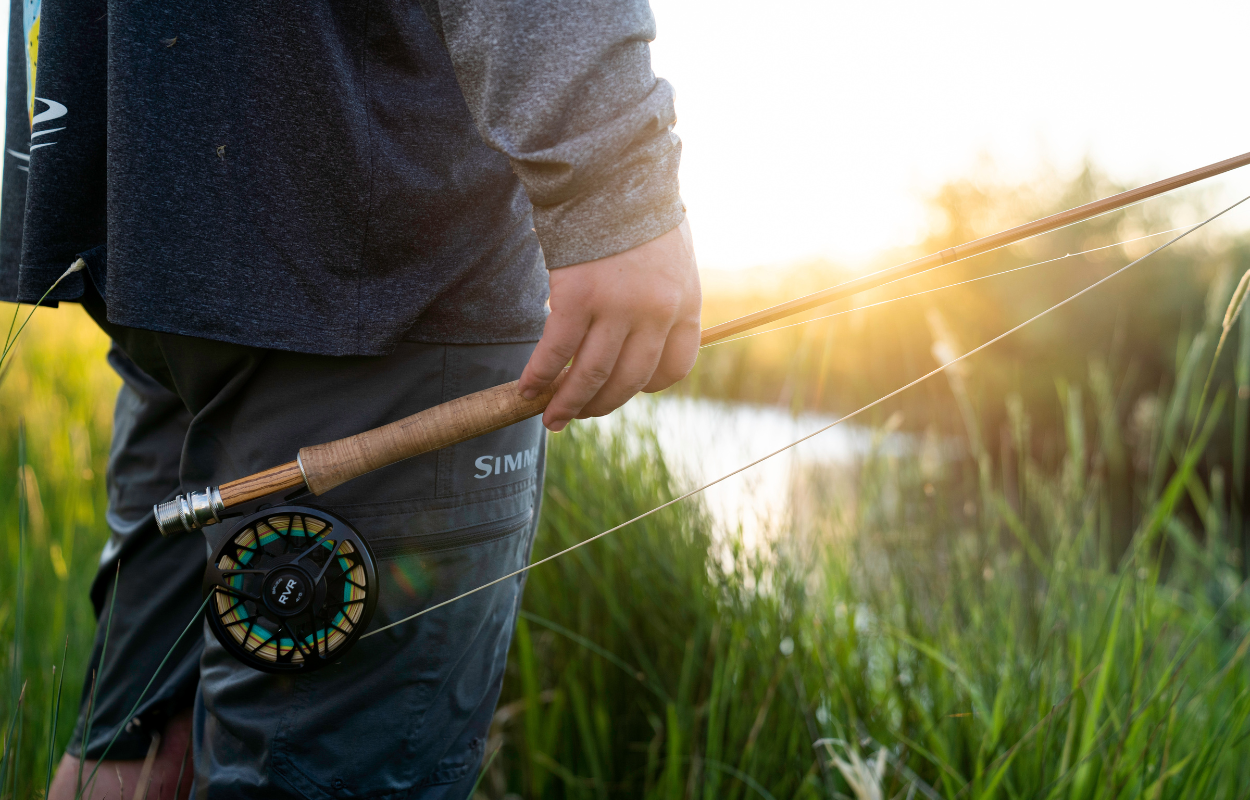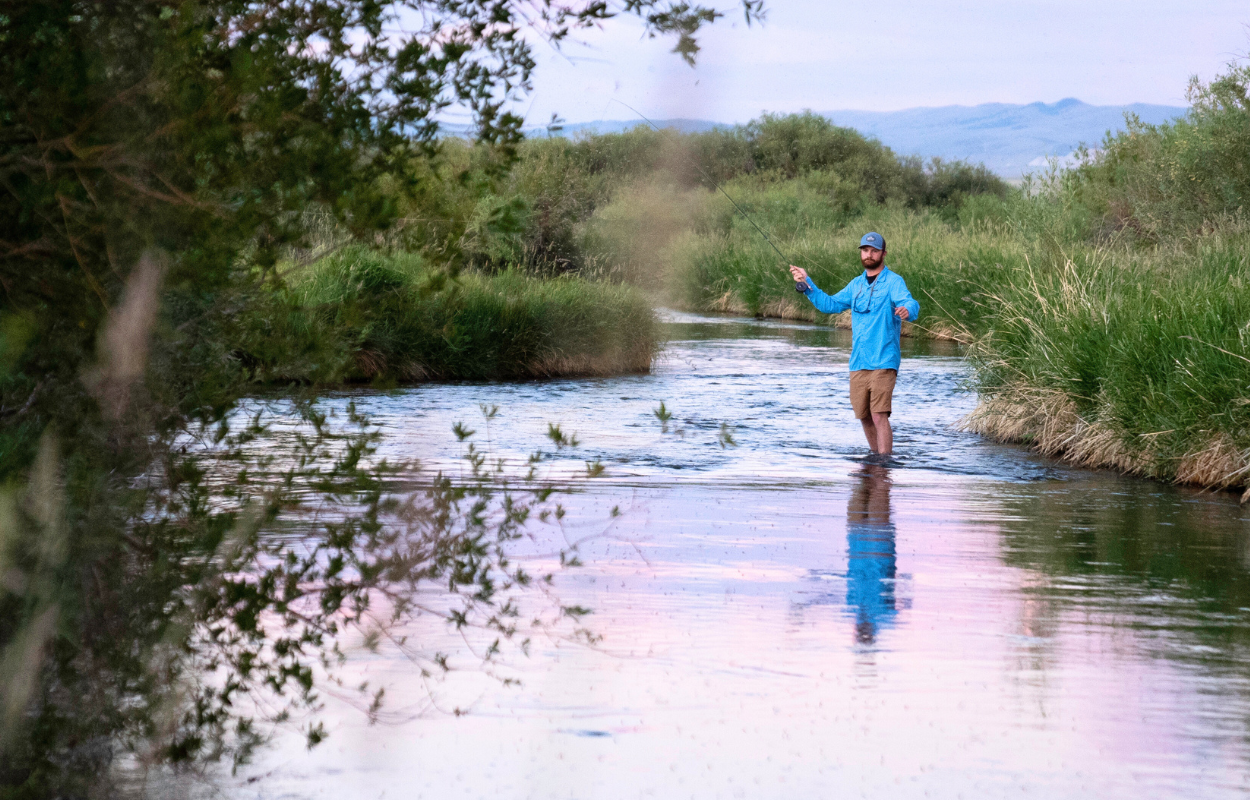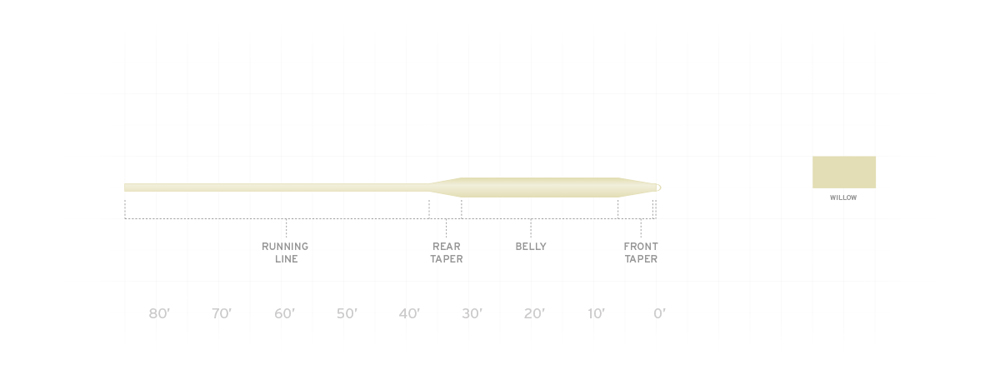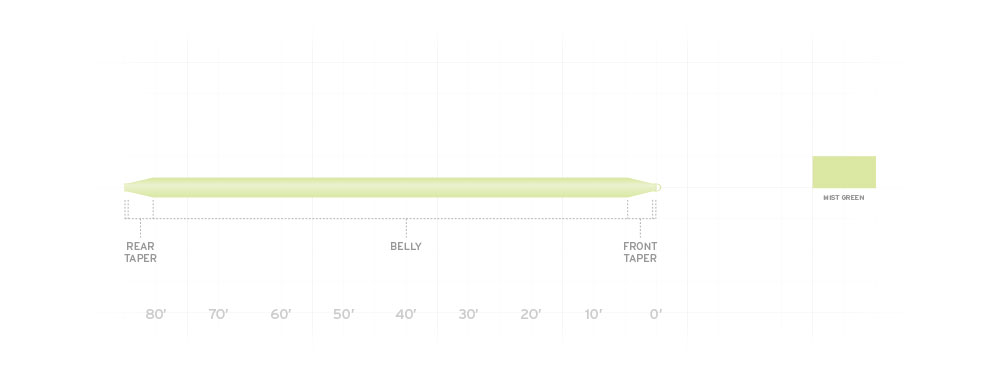Fly Rod Weight Guide: Does Rod Weight Matter?
Fly fishing gear is distinctly different than conventional tackle and many beginners who come into our Colorado fly shop commonly ask the question “Does line and rod weight matter?“. The short answer is “Yes!”. Picking the right line and rod for the type of fishing you plan to do can be a bit confusing, especially if you’re transitioning from traditional spin fishing to fly fishing. In the rest of this blog, learn why fly rod weight matters and how you can make sure that you’re using the right tool for the proper situation.

How do you know which weight fly rod to use?
With a multitude of different weights, lengths, and actions across the fly rod market, it can be tough to determine which rod weight works best for a certain situation. So we’ll break it down below:
1-3 Weight Fly Rods – Creek & Pond Rods
Fly rods and lines with a weight of one through three are suited best for smaller fish and smaller water. These lines are incredibly light and may not be able to stand up against a larger trout or bass without breaking off. The corresponding rod weight will give you the best cast with the line and fly you’re using. When in doubt, match the rod weight to the line weight for best results.
4 and 5 Weight Fly Rods – All-Around Trout Rods
Rods and lines with weights four or five are the perfect choice for a majority of your fishing experiences in Estes Park. Whether you’re fishing on lake Estes or in the Big Thompson, these weights are able to stand up to even the biggest trout, while still being light enough to catch smaller fish like crappie and small cutthroat trout.
6 and 7 Weight Fly Rods – All-Around Multi-Species
If you’re looking for the best all-around line and rod for fishing lakes and rivers, a 6-weight fly rod is your best bet. It’s a versatile weight, perfect for catching trout and medium-sized bass. While it can be overkill for the smaller trout, you’ll still be able to catch a large variety of sizes and species with this weight. If you like to fish with large streamers and dabble in warm water fisheries with Bass and Carp, a 7-weight is perfect.
8 and 9 Weight Fly Rods – All-Around Saltwater and Anadromous Fish
Saltwater anglers who like to fly fish for Bonefish, Permit, small Tarpon, Triggerfish, etc. prefer to fish with 8 and 9-weight fly rods. Additionally, anglers who are targeting migratory steelhead and salmon of the Great Lakes Region or the Pacific Northwest find their sweet spot in these rod weights.
10 and 11 Weight Fly Rods – Large Flies and Trophy Saltwater Species
When we enter the 10 and 11-weight fly rod range, we are getting serious about the fish we are targeting. From toothy critters like large Northern Pike and Musky to predatory Barracuda and migratory Tarpon, these rods are capable of stopping some of the largest sportfish that an angler might encounter in most fresh and saltwater fly fishing situations.
12+ Weight Fly Rods – Giant Fish
Most fly rod companies make up to a 12-weight fly rod and sometimes larger. Fly rods of this caliber are for the largest and strongest of species like Giant Trevally, Marlin, Sailfish, trophy Tarpon, Tuna, and more.

Does fly line weight need to match rod weight?
With such a large variety of fly rods and fly lines on the market, there are many different ways that we can optimize our fly fishing setup to be most efficient in the situation we are in. To address this, we need to cover rod action and line tapers which play a huge part in how your fly rod will cast. First, we’ll discuss the common fly rod actions:
- Fast-action fly rods: The most common rod in contemporary fly fishing is going to be fast-action. Typically, what this means is that most of the bend of your fly rod is going to occur in the tip section of your fly rod (sometimes referred to as “tip-flex”).
- Moderate-action fly rods: A very common action in modern fly rods but typically used as a dry fly specific action that allows for more delicate presentations of small-to-medium dry flies and long leaders typical of hatch-style fly fishing for trout.
- Slow-action fly rods: Rods that bend and flex all the way to the grip. This is an old style of rod common in the era of split cane bamboo rods or fiberglass. It tends to be slightly harder to cast but many long-time anglers live and die by slow-action fly rods because of the joy of casting them.
Now that we have covered the different rod actions, let’s talk about fly lines and the common tapers:

*Diagram from Scientific Anglers.
- Weight-forward: The most common taper that you will see on the market is weight-forward. This means that the largest diameter of the taper is found at the front end of the fly line or basically the end of the line that you are casting. There is a huge variety of different weight-forward tapers out there but we won’t get too technical here.

*Diagram from Scientific Anglers.
- Double-taper: A double-tapered line means that the largest diameter of the line is split evenly between the front and rear end of the fly line. The benefit of this is that when one end of your fly line is worn out, you can switch the line around and double its lifespan. Additionally, with a balanced taper, it becomes much easier to control many false casts that might be necessary in technical situations where fly placement is key to success.
All of the factors above considered, the answer to the question “does fly line weight need to match rod weight?” is “it depends”. Many different fly rod and line combinations work together but some work better than others. For example, it is possible to “over-line” a fly rod with a fly line that is one or even two line weights heavier than what is suggested. The benefit of this is that it becomes much easier to load your rod while casting or turn over heavier flies (i.e. streamer fishing). On the other hand, with a slow-to-medium action rod, it is possible to under-line your rod so that you can achieve a more delicate presentation with small flies (i.e. dry fly fishing, BWO’s, Tricos, etc.). Ultimately, it’s safe to assume that with most modern fly rods and fly lines, if you choose a fly rod with its corresponding line weight, it should cast just fine.
There’s not necessarily a black-and-white answer here but it’s worth trying a few different fly lines to determine which you like best on your chosen fly rod. You might be surprised about what you learn about your rod.
Which fly rod weight should I buy first?
If you’re just getting into fly fishing, we commonly recommend that you buy either a 5 or 6-weight fly rod due to their versatility and ease of casting with a variety of different strategies. Before buying, it’s best to consider what fish you want to target, where you will be fishing, and what flies you’ll be fishing with. If you lean more towards warm water (bass, bluegill, carp, catfish, etc.), you might want a 6-weight. If you live in trout country and your fly fishing will primarily be on coldwater streams and lakes, a 5-weight is perfect.
Have more questions about choosing the right fly rod and fly line weight? Give our Colorado fly shop a call and maybe even book an Estes Park fly fishing trip. We’re happy to teach you everything you need to know to be successful on the water!

